Tamron SP AF 90mm f/2.8 Di Macro
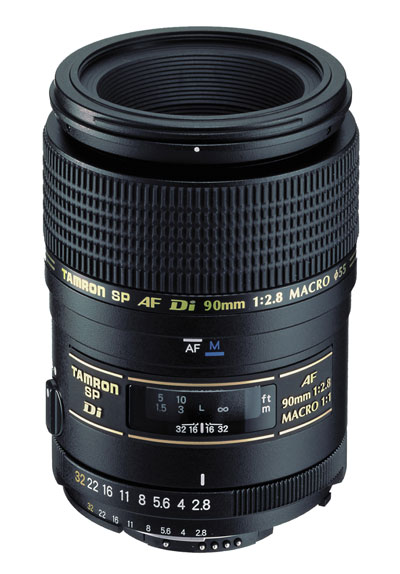 |  ePHOTOzine's expert Gary Wolstenholme takes a long, lingering look at a macro lens that has an enviable reputation. |
This Tamron costs around £345 and produces life-size magnification at its closest focus. At this price it is great value when compared to the prices the camera manufacturers ask for their macro offerings. Some are over twice the price! Independent lens makers Sigma and Tokina also offer lenses of similar specification, with the Sigma 105mm costing £375 and the Tokina 100mm being priced at £340, so the Tamron is still one of the cheapest.
There are macro lenses of 50mm, 60mm or 65mm aimed at DSLR with APS-C or Four Third format sensors. This Tamron 90mm is compatible with 35mm full-frame as well as APS-C format cameras. On the cameras with cropped sensors, this 90mm is effectively 135mm on Nikon/Pentax/Sony DSLRs and 144mm on Canon. This could be too long for some photographers shooting portraits but will definitely suit people keen on shooting insects because it allows tight compositions without having to get too close.
Tamron SP AF 90mm f/2.8 Di Macro: Features and handling
The lens barrel is largely constructed of injection moulded plastics, which have a good finish to them and appear to be high quality. The lens extends by almost double when focused to its closest distance, which can lead to some issues lighting your subject, especially when using the supplied lens hood. The front element is deeply recessed inside the lens barrel, which should give sufficient protection against light sources outside of the image area without the hood.
AF is powered by a built-in motor, which makes no claims to be a silent one, but the noise produced isn't overly disturbing and focus is achieved quickly at normal distances. A focus limiter switch, located on the side of the lens barrel, limits the range the lens can hunt through, which should speed autofocus. For close distances, I'd still recommend focusing manually though.
The focusing ring can be moved forward to disengage it, so that it doesn't rotate during focusing. This also serves as the AF/MF switch, so there is no need to fiddle about switching the camera from autofocus to manual as well. The manual focusing action is sooth and precise, which is very important for a lens such as this. As the lens is focused closer, the maximum aperture is adjusted in the camera to reflect the loss of light, which will ensure flash exposures are accurate at these close distances.
Overall, I really like the way this lens handles. Being a lightweight lens, it is easy to support hand-held, and poses few issues when used with a tripod.
Tamron SP AF 90mm f/2.8 Di Macro: Performance
For this review, the lens was tested on a 12Mp Nikon D700 using Imatest.
For its price, this lens is an outstanding performer. Centre resolution is already very good at f/2.8, with the edges not being far behind in terms of resolution. Stopping down to between f/8 and f/11 yields images with excellent resolution in the centre and very good sharpness towards the edges. Diffraction starts to reduce the resolution from f/11 onwards, but f/22 still produces good results, and f/32 is still more than acceptable. Contrast is very good in images taken down to f/22, with a slight drop at f/32.
| Resolution at 90mm |
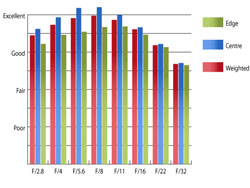 |
There is nothing much to worry about with Chromatic Aberrations either. At f/2.8 Imatest recorded chromatic aberration of 0.6pixel-widths, which will not normally cause issues in images.
| Chromatic Aberrations at 90mm |
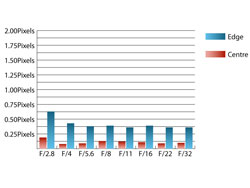 |
Light falloff in the corners is very well controlled for a wide-aperture lens. At f/2.8 the corners are 0.9 stops darker than the image centre. Stopping down to f/5.6 produces even illumination across the frame.
Distortion is also very well controlled. Imatest recorded 0.436% pincushion distortion, which is very low, as you would expect for a fixed focal lens.
A small amount of ghosting and flare is present when taking images of a strong point sources of light which takes the form of a faint green ghost on the opposite side of the image centre. Light sources outside of the image frame pose no problems with flare or ghosting, thanks in part to the deeply recessed front element. I noticed little difference when testing with or without the supplied hood.
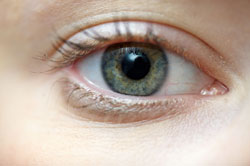 Depth-of-field is less the closer you get. | 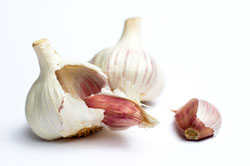 The 90mm is perfect for still-life work. |
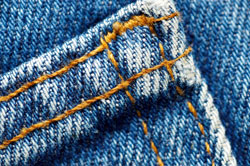 F/8 and f/11 are the best apertures. |  Resolution of fine detail is excellent. |
A small amount of ghosting and flare is present when taking images of a strong point sources of light which takes the form of a faint green ghost on the opposite side of the image centre. Light sources outside of the image frame pose no problems with falre of ghosting, thanks in part to the deeply recessed front element. I noticed little difference when testing with or without the supplied hood.
Tamron SP AF 90mm f/2.8 Di Macro: Verdict
The Tamron 90mm Macro is a superb performer, producing high resolution images with bags of contrast and detail. For its price it represents excellent value for money.
| FEATURES |  |
| HANDLING |  |
| PERFORMANCE |  |
| VALUE |  |
| OVERALL |  |
 Tamron SP AF 90mm f/2.8 Di Macro: Pros
Tamron SP AF 90mm f/2.8 Di Macro: Pros Excellent resolution
Excellent resolution Good build
Good build Excellent value for money
Excellent value for moneyTamron SP AF 90mm f/2.8 Di Macro: Cons
 Reduction in contrast at f/32
Reduction in contrast at f/32Tamron SP AF 90mm f/2.8 Di Macro: Specification
| Price | £335 |
| Contact | Intro2020 |
| Filter size | 55mm |
| Format | Full frame/35mm/FX |
| Construction | 9 elements in 10 groups |
| Angle-of-view | 27° |
| 35mm equivalent focal length | 90mm, 135mm (Nikon/Pentax/Sony), 144mm (Canon) on APS-C body |
| Internal focusing | No |
| Image stabilisation | No |
| Minimum focus | 29cm |
| Maximum aperture | f/2.8 |
| Minimum aperture | f/32 |
| Weight | 405g |
| Size | 95x71.5mm |
| In the box | Circular lens hood, soft lens pouch |
Diese Referenz kann ich nur unterstreichen dieses Objektiv ist das Mass der Gläser im Macrobereich.Meine Test gehen von F5, F80,F70,Pronea 600i,D50,D40X und D5000.Gestochen scharfe Negativ und digitale Bilder von Blende 2.8 bis 32.
Add your message
Login required
Please login here or if you've not registered, you can register here. Registering is safe, quick and free.
Please login here or if you've not registered, you can register here. Registering is safe, quick and free.
photodo Stats
1102 lenses
428 MTF tests
74 in-depth photodo reviews
100+ users join each day
Help the lens community by reviewing or rating a lens today via our lens search
428 MTF tests
74 in-depth photodo reviews
100+ users join each day
Help the lens community by reviewing or rating a lens today via our lens search
Latest Lens Reviews
- Chinon 28mm f/2.8 Vintage Lens Review
- Canon EF 70-200mm f/4L IS II USM Lens Review
- Samyang AF 85mm f/1.4 EF Review
- Sigma 70mm f/2.8 DG Macro Art Review
- Samyang AF 24mm f/2.8 FE Review
- Meike 50mm f/1.7 Review
- Tamron 70-210mm f/4 Di VC USD Review
- Lensbaby Burnside 35mm f/2.8 Review
- Asahi Super Takumar 50mm f/1.4 Review
- Asahi Super-Multi-Coated Takumar 135mm f/3.5 Review
